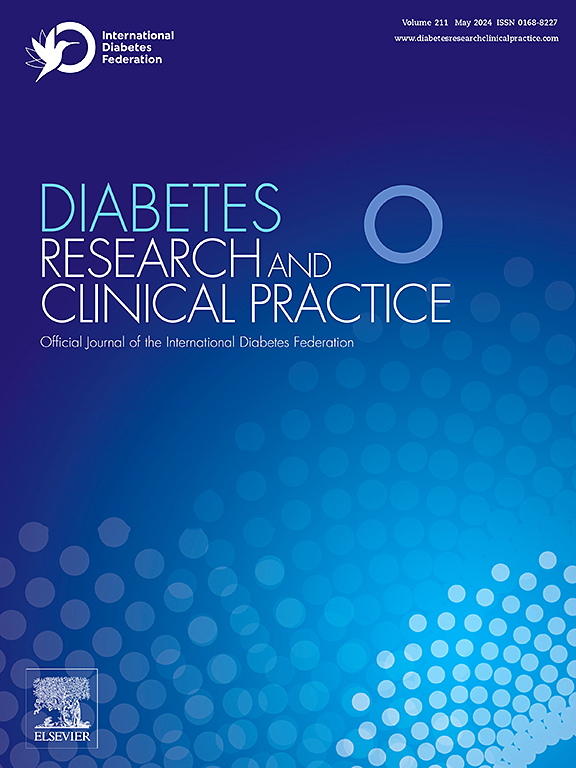The burden of type 2 diabetes in China from 1990 to 2021: A comparative analysis with G20 countries using the global burden of disease study 2021
IF 6.1
3区 医学
Q1 ENDOCRINOLOGY & METABOLISM
引用次数: 0
Abstract
Objectives
The study aims to evaluate the burden of Type 2 Diabetes (T2D) in China from 1990 to 2021, and compare to it across G20 countries.
Methods
We utilized data from the Global Burden of Disease Study 2021 to examine the burden of T2D in China from 1990 to 2021. Prevalence, mortality, disability-adjusted life years (DALYs), years of life lost (YLLs), and years lived with disability (YLDs) were calculated. Comparative analyses were conducted with other G20 countries.
Results
T2D prevalence in China increased between 1990 and 2021, with rates rising from 3519.8 (3138.3–3910.1) to 6055.5 (5510.1–6614.3) per 100,000. The death rates slightly decreased from 9.3 (8.2–10.5) per 100,000 to 8.7 (7.3–10.3). The DALYs rate increased from 438.7 (358.5–531.5) to 569.8 (435.4–734.2), with increases observed in YLDs and YLLs. Males had a heavier disease burden in China. Compared to G20 countries, China ranked high in prevalence but had relatively better mortality outcomes in older age groups.
Conclusion
This study reveals the enormous burden and remarkable control efforts of T2D in China. Comparative analysis emphasizes the importance of tailored public health interventions to address this growing health crisis.
1990 - 2021年中国2型糖尿病负担:基于2021年全球疾病负担研究与G20国家的比较分析
本研究旨在评估1990年至2021年中国2型糖尿病(T2D)的负担,并与G20国家进行比较。方法利用《2021年全球疾病负担研究》(Global Burden of Disease Study 2021)的数据,研究1990年至2021年中国T2D负担情况。计算患病率、死亡率、残疾调整生命年(DALYs)、丧失生命年(YLLs)和残疾生活年(YLDs)。与其他G20国家进行了比较分析。结果中国的st2d患病率在1990 - 2021年间呈上升趋势,从3519.8(3138.3-3910.1)/ 10万上升至6055.5(5510.1-6614.3)/ 10万。死亡率略有下降,从每10万人9.3人(8.2-10.5人)降至8.7人(7.3-10.3人)。DALYs比率从438.7(358.5-531.5)增加到569.8 (435.4-734.2),yld和yll也有所增加。中国男性的疾病负担更重。与20国集团国家相比,中国在患病率方面排名较高,但在老年群体中死亡率相对较低。结论本研究揭示了中国T2D负担巨大,控制工作成效显著。比较分析强调了有针对性的公共卫生干预措施对解决这一日益严重的健康危机的重要性。
本文章由计算机程序翻译,如有差异,请以英文原文为准。
求助全文
约1分钟内获得全文
求助全文
来源期刊

Diabetes research and clinical practice
医学-内分泌学与代谢
CiteScore
10.30
自引率
3.90%
发文量
862
审稿时长
32 days
期刊介绍:
Diabetes Research and Clinical Practice is an international journal for health-care providers and clinically oriented researchers that publishes high-quality original research articles and expert reviews in diabetes and related areas. The role of the journal is to provide a venue for dissemination of knowledge and discussion of topics related to diabetes clinical research and patient care. Topics of focus include translational science, genetics, immunology, nutrition, psychosocial research, epidemiology, prevention, socio-economic research, complications, new treatments, technologies and therapy.
 求助内容:
求助内容: 应助结果提醒方式:
应助结果提醒方式:


